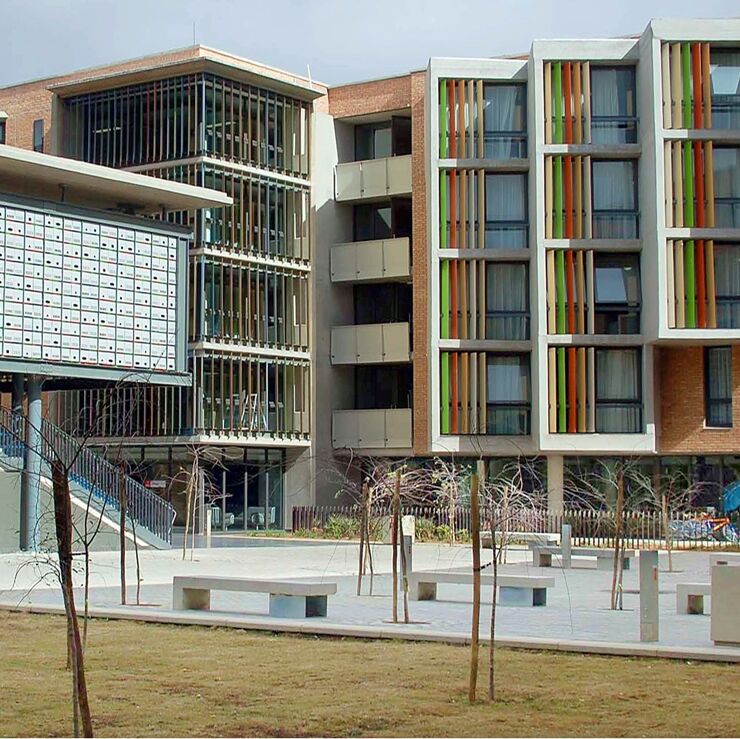
The South African government has used NEC contracts to procure the first phase of its two newest universities. After a search for appropriate sites starting in 2011, Sol Plaatje University in Kimberley, Northern Cape Province and the University of Mpumalanga in Nelspruit, Mpumalanga Province were formally established in 2013.
Both universities have been developed on existing sites, so much of the initial work involved the refurbishment of existing buildings. Sol Plaatje includes the former Kimberley Civic Centre and National Institute for Higher Education, while University of Mpumalanga occupies the site of Lowveld College of Agriculture, KaNyamazane Hospitality School and Siyabuswa Education Campus.
The first 275 students enrolled in 2014 and were accommodated in the refurbished buildings while design of new buildings got underway. Construction started later that year, resulting in 16 new teaching, research, accommodation, welfare and administrative facilities being delivered by the start of the 2016 academic year – increasing the number of student places to nearly 2,000.
Expert NEC team
Given the complex scope and challenging timeframes, the government’s Department of Higher Education and Training (DHET) appointed the experienced Campus Development and Planning unit at University of the Witwatersrand in Johannesburg to lead the project management team. ‘Wits’ has successfully delivered 35 of its own building projects worth R1.5 billion (£80 million) using NEC contracts.
Wits capital projects manager Spencer Hodgson says, ‘We adopted NEC on our capital works programme in 2008 to promote a culture change from the traditional ‘them and us’ approach to one of collaboration. Over 6 years we were able to deliver our overall portfolio of projects within 6% of the control budget.’
The new universities project management team led by Hodgson developed a comprehensive NEC-based procurement strategy for the first five-year phase. Consultants were generally engaged under the NEC3 Professional Services Contract (PSC) option G (term contract), while equipment was procured using the NEC3 Supply Contract (SC) and NEC3 Short Supply Contract (SSC).
Building refurbishments were carried out using the NEC3 Engineering and Construction Contract (ECC) Option F (management contract) and new buildings were procured using ECC Option C (target contract with activity schedule). For smaller, less complex works, the NEC3 Engineering and Construction Short Contract (ECSC) was used.
Fast-track delivery
Architects were appointed through a competition in 2013, with the remainder of the professional team and main contractors following in 2014. Construction started in October 2014 with up to 70% of design information unknown at the start due to the fast-track nature of both projects.
According to Hodgson, ‘In total we procured around 700 work packages through 290 NEC contracts worth R1.6 billion (£90 million). We used both framework and non-framework agreements and a mix of selection methods including negotiation, quotation, qualified and open tenders.’
ECC Option F building refurbishment contracts totaled R113 million (£6 million) and ECC Option C new building works amounted to R890 million (£50 million). ‘Final prices increased by just 1% at Sol Plaatje and 2% at Mpumalanga, and all buildings were delivered below DHET cost norms so we remained within our overall budget,’ says Hodgson.
Consultant Ron Watermeyer, responsible for project procurement, says that when presented with a case study of the project, ‘senior public servants at two National Treasury workshops concluded that successful delivery was due to strong and robust governance arrangements, adoption and execution of a procurement strategy, a strong client team led by a client delivery manager, and client leadership. The NEC family of contracts provided a flexible and solid basis to implement the required strategies and the collaborative culture embraced by the client delivery team, assisting to deliver greater certainty of project outcomes’.
In April 2016 the universities took over responsibility for their own development budgets, with planned procurements of around R5 billion (£560 million) over the next five years using NEC contracts. By 2024 there are planned to be 5,000 places at Sol Plaatje and 15,000 places at Mpumalanga.
Benefits of using NEC
- An NEC-based procurement strategy successfully delivered South Africa’s two newest universities on time and within budget, creating 2,000 university places in just five years following government’s decision to develop two new universities.
- NEC encourages parties to work together collaboratively, ensuring project goals of time, quality and costs are achieved.
- Comprehensive suite of contracts provides a common procurement approach across works, services and supplies.




